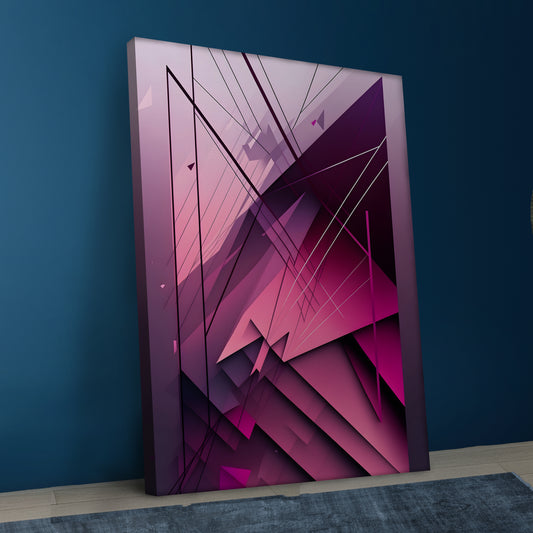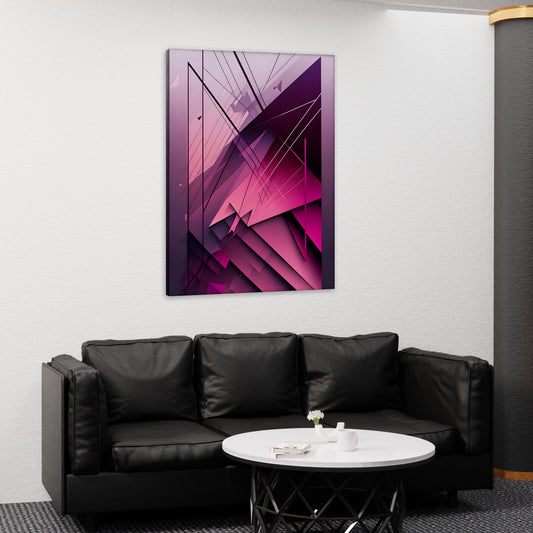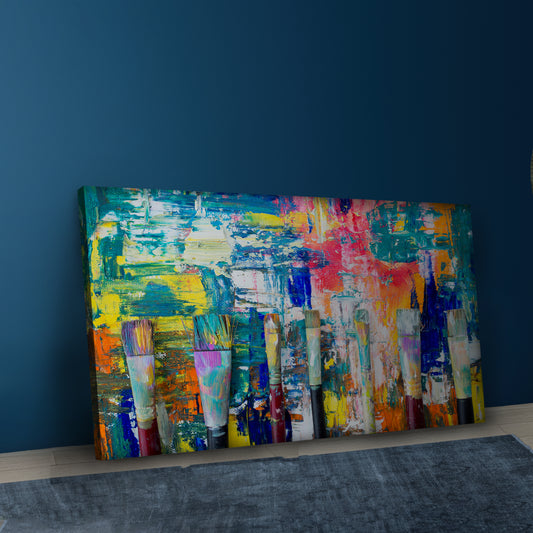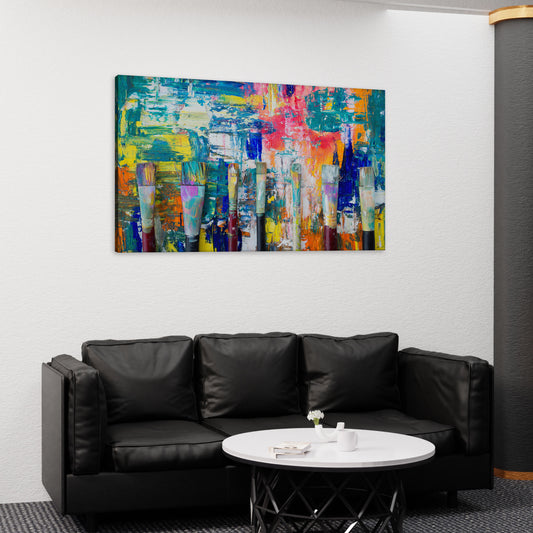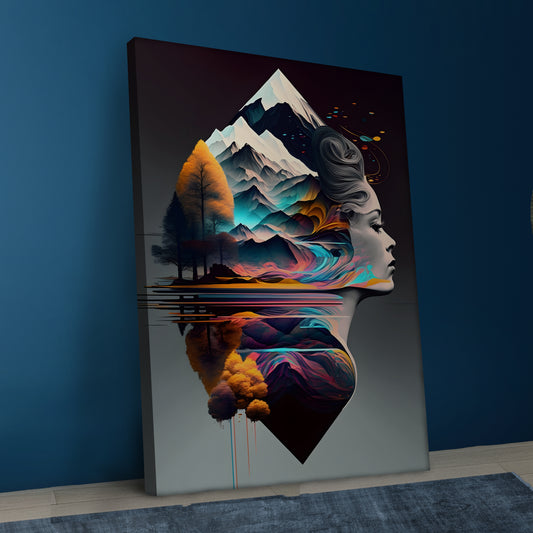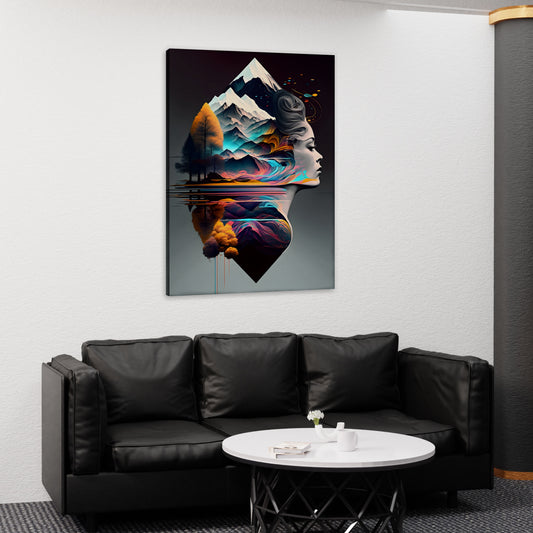Exploring Different Art Styles Through Canvas Prints
Canvas prints offer a versatile and accessible way to explore various art styles and incorporate them into your home decor. From classic and traditional styles to modern and contemporary designs, canvas art allows you to experiment with different aesthetics and find the ones that resonate with you. In this blog, we’ll explore a variety of art styles and provide tips on how to incorporate them into your home using canvas prints.
1. Classic and Traditional Art
Classic and traditional art styles are characterized by their timeless beauty, attention to detail, and historical significance. These styles often feature realistic depictions of subjects, intricate patterns, and rich colors.
Examples:
- Renaissance: Art from the Renaissance period (14th-17th centuries) is known for its focus on realism, perspective, and human anatomy. Famous artists include Leonardo da Vinci and Michelangelo.
- Baroque: Baroque art (17th-18th centuries) is dramatic and emotional, with bold contrasts and elaborate details. Notable artists include Caravaggio and Rembrandt.
- Rococo: Rococo art (18th century) is ornate and decorative, often featuring playful and light-hearted themes. Artists like François Boucher and Jean-Honoré Fragonard are well-known in this style.
Tips for Incorporating:
- Rich Colors: Choose canvas prints with rich and vibrant colors to add warmth and depth to your decor.
- Ornate Frames: Pair traditional art prints with ornate frames to enhance their classic appeal.
- Focal Points: Use traditional art as focal points in formal spaces like dining rooms or living rooms.
2. Impressionism
Impressionism emerged in the late 19th century and is characterized by its focus on light, color, and everyday scenes. Impressionist artists often used loose brushstrokes and vibrant colors to capture the essence of a moment.
Examples:
- Claude Monet: Known for his landscapes and water lily paintings, Monet captured the beauty of nature with a soft and dreamy quality.
- Edgar Degas: Degas is famous for his depictions of ballet dancers and everyday urban scenes.
- Pierre-Auguste Renoir: Renoir’s art often features cheerful and lively scenes, with an emphasis on light and color.
Tips for Incorporating:
- Soft Palette: Choose canvas prints with soft and muted colors to create a serene and calming atmosphere.
- Casual Arrangement: Arrange impressionist prints casually for a relaxed and inviting look.
- Nature Themes: Incorporate impressionist landscapes or garden scenes to bring a touch of nature indoors.
3. Modern Art
Modern art encompasses a wide range of styles and movements that emerged in the late 19th and early 20th centuries. It is characterized by its break from traditional techniques and its exploration of new ideas and forms.
Examples:
- Cubism: Developed by Pablo Picasso and Georges Braque, cubism features fragmented and abstracted forms.
- Surrealism: Surrealist artists like Salvador Dalí and René Magritte created dreamlike and fantastical scenes that challenge reality.
- Abstract Expressionism: Abstract expressionists like Jackson Pollock and Mark Rothko focused on spontaneous and expressive techniques, often using bold colors and dynamic compositions.
Tips for Incorporating:
- Bold Colors: Choose modern art prints with bold and striking colors to create a dynamic and energetic look.
- Abstract Forms: Incorporate abstract prints to add visual interest and stimulate creativity.
- Eclectic Mix: Combine different modern art styles for an eclectic and diverse display.
4. Contemporary Art
Contemporary art refers to art created in the present day and encompasses a wide variety of styles and techniques. It is often characterized by its experimental and innovative approach.
Examples:
- Street Art: Street artists like Banksy and Shepard Fairey use graffiti and public art to make powerful social and political statements.
- Digital Art: Digital artists use technology to create intricate and visually stunning works.
- Mixed Media: Contemporary artists often combine different materials and techniques to create unique and multidimensional pieces.
Tips for Incorporating:
- Innovative Techniques: Choose canvas prints that showcase innovative techniques and materials.
- Mixed Media: Incorporate mixed media prints to add texture and depth to your decor.
- Statement Pieces: Use contemporary art as bold statement pieces that reflect current trends and ideas.
5. Minimalism
Minimalism is an art style that emerged in the mid-20th century, characterized by its simplicity, clean lines, and focus on form and color. Minimalist art often features geometric shapes and a limited color palette.
Examples:
- Donald Judd: Known for his geometric and industrial sculptures, Judd’s work emphasizes simplicity and precision.
- Agnes Martin: Martin’s minimalist paintings often feature subtle grids and soft, muted colors.
- Ellsworth Kelly: Kelly’s work focuses on bold, simple shapes and vibrant colors.
Tips for Incorporating:
- Clean Lines: Choose minimalist prints with clean lines and simple shapes to create a modern and uncluttered look.
- Neutral Colors: Incorporate prints with neutral colors to create a calm and serene atmosphere.
- Negative Space: Embrace negative space in your art arrangement to enhance the minimalist aesthetic.
Conclusion
Exploring different art styles through canvas prints is a wonderful way to discover new aesthetics and incorporate them into your home decor. Whether you prefer classic and traditional art, impressionism, modern art, contemporary art, or minimalism, canvas prints offer a versatile and accessible way to experiment with various styles. By selecting prints that resonate with your taste, considering color and composition, and thoughtfully arranging them in your space, you can create a unique and visually appealing decor that reflects your personality and artistic interests.

